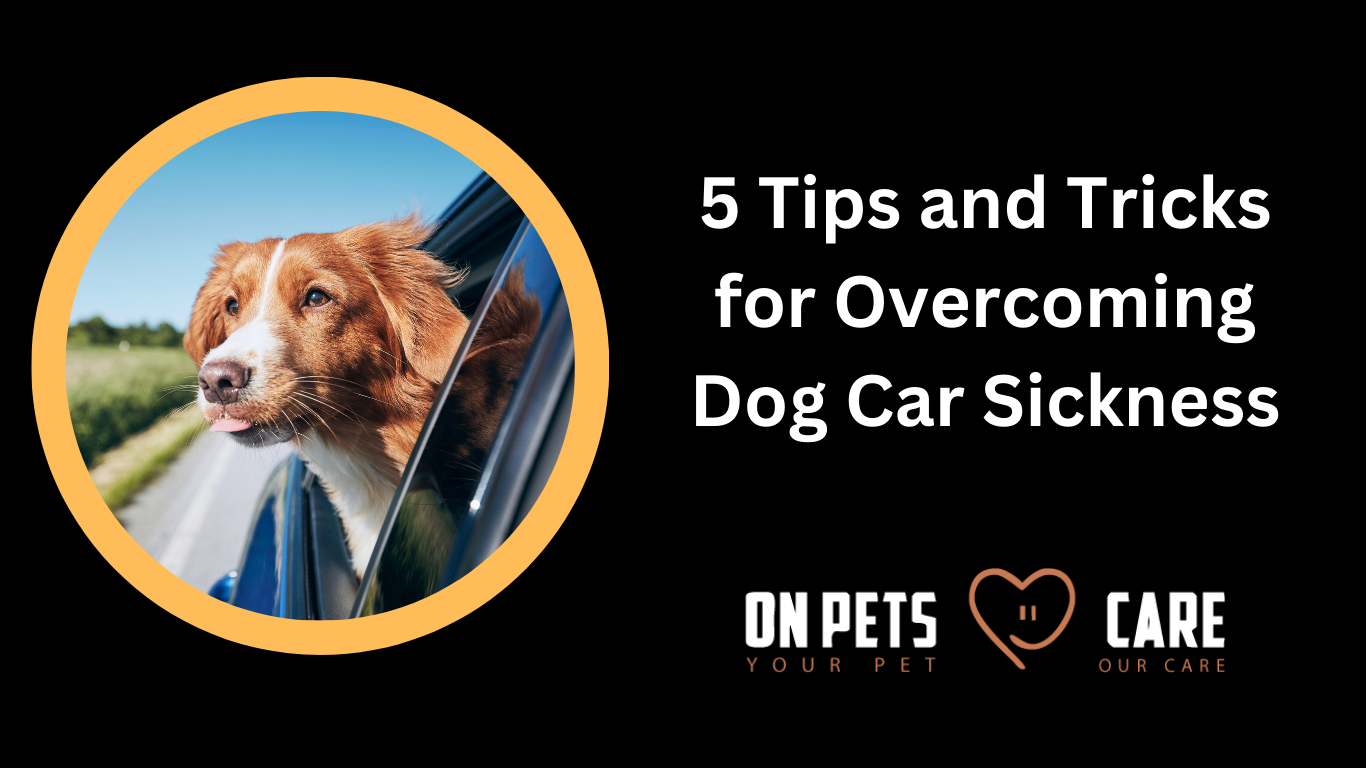5 Tips and Tricks for Overcoming Dog Car Sickness
Hey there, fellow pet parents! If you’re reading this, chances are you’ve faced the dreaded challenge of a dog car sickness. The challenge of car sickness to dogs is a riddle many pet parents face, but fear not, because we’ve got your back. In this guide, we’re going to talk about your upset tummies, armed with tips and tricks to turn those car journeys into memorial adventures.
Now, let’s talk about this dog car sickness thing. It’s like when your dog feels a bit yucky during car rides. You know, like how some people feel queasy on roller coasters? Well, our furry friends can feel that too. It’s nothing to worry about, but we’ve got ways to make it better.
In this article, we’ll dive into the whys, hows, and most importantly, the fixes to make car rides a joy for both you and your furry friend. So let’s start to explore the ins and outs of overcoming dog car sickness!
Table of Contents
What is Dog Car Sickness?
Dog car sickness is like the four-legged version of motion sickness, making your canine companion feel as queasy as a first-time roller coaster rider. Dog car sickness, also known as motion sickness in dogs, is a condition in which a dog experiences nausea and vomiting while traveling in a car. It is a common issue that can affect dogs of all ages and breeds. The motion of the car can disrupt the dog’s sense of balance and spatial orientation, leading to symptoms similar to human motion sickness.
Symptoms of dog car sickness may include:
- Excessive drooling: Dogs may drool more than usual when they are feeling nauseous.
- Vomiting: This is a common symptom of motion sickness in dogs.
- Restlessness: Dogs may become anxious, restless, or whine while in the car.
- Excessive panting: Panting may increase due to stress and discomfort.
- Lethargy: Some dogs may become lethargic or depressed during car rides.
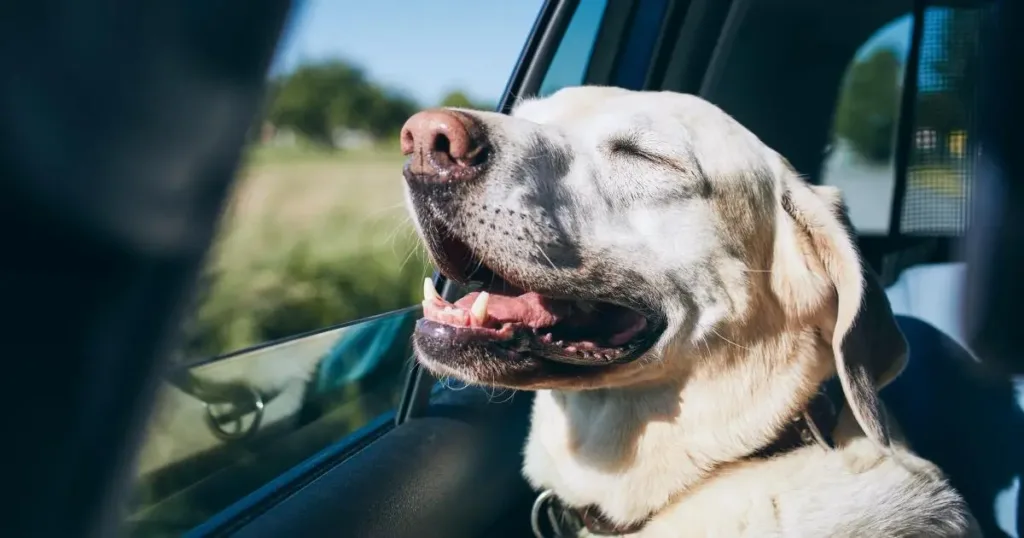
It could be anything from an overexcited stomach to anxiety or even an unpleasant memory associated with previous trips. Dogs, just like us, have their off days, and sometimes, the journey itself is enough to set off the car sickness alarm.
The causes of dog car sickness can vary, and factors contributing to it may include the dog’s sensitivity to motion, the type of motion (e.g., winding roads, sudden stops), and anxiety associated with the car or travel in general. The most common reasons for dog car sickness include:
| Common Reasons for Dog Car Sickness | Description |
|---|---|
| Motion Sensitivity | Some dogs are more sensitive to motion and changes in their spatial orientation, leading to nausea. |
| Inexperienced Travelers | Puppies or dogs that haven’t had much exposure to car rides may be prone to car sickness. |
| Anxiety or Fear | Dogs that associate the car with negative experiences or feel anxious during travel may experience sickness. |
| Poor Ventilation in the Car | Lack of fresh air circulation in the car can contribute to discomfort and nausea in dogs. |
| Unfamiliar or Unpleasant Smells | Odors inside the car or unfamiliar scents during the journey may trigger nausea in some dogs. |
| Visual Disorientation | Dogs looking out of the window may experience visual disorientation, causing motion sickness. |
| Pre-existing Health Conditions | Underlying health issues, such as ear problems or gastrointestinal disorders, can contribute to car sickness. |
| Long or Winding Journeys | Extended car rides, especially on winding roads, can increase the likelihood of motion sickness. |
| Inadequate Rest Before Travel | Fatigue or lack of rest before the journey may make a dog more susceptible to car sickness. |
Signs of Dog Car Sickness
Spotting the signs early can save both you and your pup from a messy car ride. Keep an eye out for excessive drooling, restlessness, yawning, or, worst-case scenario, the not-so-pleasant aroma of a sick pup. If your furry friend starts acting like a canine version of a seasick sailor, it’s time to take action.
Signs of dog car sickness can vary, and not all dogs will exhibit the same symptoms. However, common signs of car sickness in dogs include:
- Excessive Drooling: Dogs may drool more than usual when they are feeling nauseous or anxious during car rides.
- Vomiting: This is a classic sign of motion sickness. Dogs may vomit during or shortly after a car journey.
- Restlessness: Dogs may become restless, fidgety, or agitated while in the car. They may shift positions frequently.
- Excessive Panting: Panting can increase due to stress, discomfort, or anxiety associated with car travel.
- Lethargy: Some dogs may become lethargic or appear depressed during car rides, possibly due to the stress of the situation.
- Whining or Vocalization: Dogs may vocalize their discomfort through whining, whimpering, or other vocal expressions.
- Shivering or Trembling: Dogs may shiver or tremble as a response to the stress and anxiety associated with car travel.
- Attempts to Escape: Dogs experiencing car sickness may try to escape the car or show signs of aversion to getting into the vehicle.
- Pacing: Restless pacing within the car or attempts to move around excessively may be a sign of discomfort.
- Avoiding Eye Contact: Some dogs may avoid making eye contact or turn away from windows, potentially to reduce visual stimulation.
Dog Car Sickness and Motion Sickness
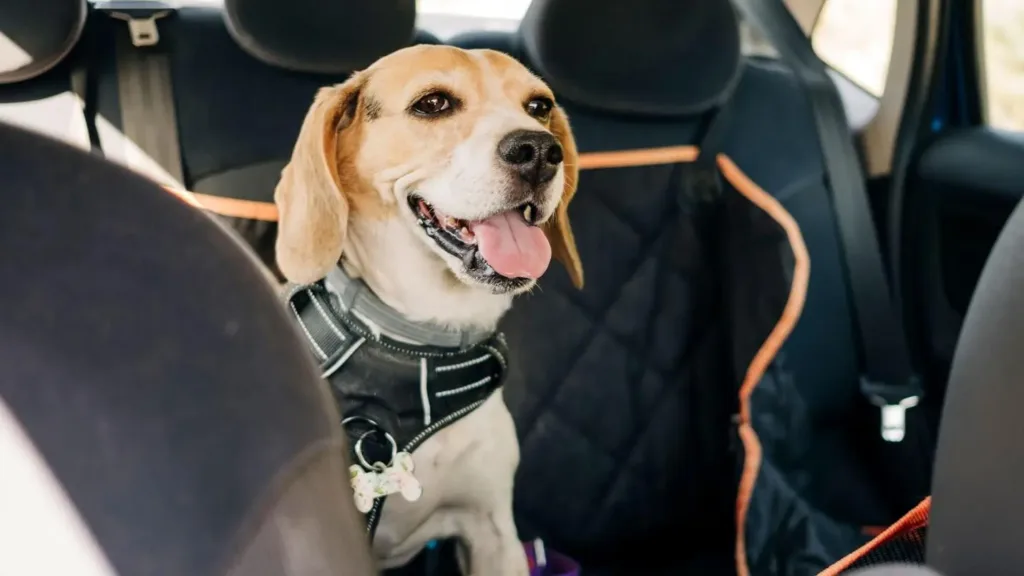
Let’s clear up a common misconception: dog car sickness and motion sickness aren’t just for humans. Dogs, with their acute senses, can also feel the jolts and turns more intensely than we do. Understanding this connection is key to finding the right strategies to ease your pup’s discomfort.
Dog car sickness is a type of motion sickness that occurs when a dog is traveling in a car. Motion sickness in dogs, similar to humans, is a condition where the sensory organs responsible for balance and spatial orientation (such as the inner ear) send conflicting signals to the brain. This discrepancy between what the eyes see and what the inner ear senses can lead to symptoms of nausea and discomfort.
Here are some key points related to dog car sickness and motion sickness:
- Similarities to Human Motion Sickness:
- Dogs, like humans, can experience motion sickness during car rides due to the motion and movement of the vehicle.
- Symptoms may include nausea, vomiting, drooling, restlessness, and other signs of discomfort.
- Causes of Dog Car Sickness:
- Sensitivity to motion, especially in puppies or dogs unaccustomed to car travel.
- Anxiety or fear associated with the car or the travel experience.
- Poor ventilation or unpleasant smells inside the car.
- Visual disorientation when looking out of the window.
- Long or winding journeys can increase the likelihood of motion sickness.
- Prevention and Management:
- Gradual desensitization: Get the dog used to short car rides, gradually increasing the duration.
- Ensure proper ventilation and minimize strong odors inside the car.
- Use a well-ventilated and secure crate or carrier to provide a safe and comfortable space.
- Limit food intake before the journey.
- Consider short breaks during the trip for fresh air and a chance to stretch.
- Consulting a Veterinarian:
- If car sickness persists or is severe, consulting a veterinarian is advisable.
- The veterinarian may recommend medications or other strategies to manage motion sickness.
- Individual Variations:
Like people, certain dogs are more or less susceptible to motion sickness. Over time, some dogs could outgrow it or grow more acclimated to automobile rides.
Understanding the signs, causes, and preventive measures for dog car sickness can help pet owners make car travel more comfortable and enjoyable for their canine companions.
5 Ways to Minimize Motion Sickness in Your Dog

- Smooth Operator: Take it slow. Gradually introduce your dog to car rides, starting with short trips around the block. Think of it as a warm-up for the grand adventure that awaits.
- Comfy Cozy: Make the car a comfortable space. Bring your pup’s favorite blanket or toy. Creating a familiar environment can do wonders to ease their nerves.
- Fresh Air Fiesta: Crack those windows open. A little fresh air can go a long way in keeping nausea at bay. It’s like turning the car into a moving, well-ventilated doggy oasis.
- Break Time Bonanza: Plan pit stops. Giving your dog a chance to stretch their legs and do their business can be a game-changer. Plus, who doesn’t love a mini-roadside adventure?
- Backseat Buddies: Have a co-pilot. If at all possible, bring a friend to keep your dog entertained. Occasionally, all it takes to transform an anxious ride into an enjoyable one is a familiar face.
How to Prevent Car Sickness in Puppies
Preventing car sickness in puppies involves gradual exposure and positive associations with car rides. Start by allowing the puppy to explore the stationary car, associating it with positive experiences like treats, toys, or short play sessions inside the vehicle. Gradually progress to short, calm rides around the block, ensuring a smooth and steady drive. Keep the car well-ventilated and free of strong odors.
Limit food intake before travel to reduce the chances of an upset stomach. Utilize a secure and well-ventilated crate or carrier to provide a familiar and comfortable space during the journey. Frequent breaks for fresh air and short walks can help alleviate anxiety. Consistency is key, so maintain a positive and calm demeanor during car rides, reinforcing the idea that traveling in the car is a safe and enjoyable experience.
If the puppy still experiences car sickness, consult a veterinarian for guidance, as they may recommend specific strategies or medications to address the issue.
Tips and Tricks for Overcoming Dog Car Sickness
Oops, a little too late? Don’t worry it happens to the best of us. If your pup is mid-sickness, find a safe spot to pull over, offer comfort, and clean up the mess.
Recall that patience is essential
You can assist your dog feel better if they are suffering from vehicle sickness in a few different ways:
- Short Trips and Gradual Desensitization:
- Start with short car rides to gradually acclimate your dog to the motion. Gradually increase the duration of the trips as your dog becomes more comfortable.
- Secure and Comfortable Environment:
- Use a well-ventilated and secure crate or carrier to provide a safe and comfortable space for your dog during the journey. Make sure it’s large enough for them to stand, turn around, and lie down.
- Limit Food Intake Before Travel:
- Avoid feeding your dog a large meal before the car ride. A hungry stomach or a full belly can contribute to nausea.
- Ventilation and Fresh Air:
- Ensure good ventilation in the car. Open windows slightly to allow fresh air circulation, as stale air can exacerbate nausea.
- Frequent Breaks:
- Take breaks during the journey to allow your dog to get out of the car, stretch their legs, and relieve themselves. Short walks and exposure to fresh air can help reduce anxiety.
- Take breaks during the journey to allow your dog to get out of the car, stretch their legs, and relieve themselves. Short walks and exposure to fresh air can help reduce anxiety.
How to Treat Dog Car Sickness?
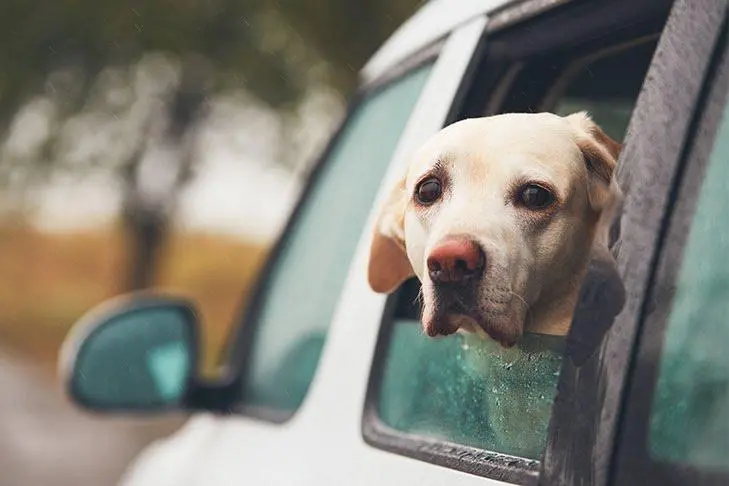
Prevention is ideal, but if the inevitable happens, a vet visit might be in order. They can recommend medications or alternative therapies to help manage your pup’s car sickness. Always consult a professional for the best advice tailored to your furry friend.
- Gradual Desensitization:
- Introduce short, positive car rides and gradually increase the duration.
- Secure and Comfortable Seating:
- Use a well-ventilated crate or carrier secured in the car for a familiar and comfortable space.
- Limit Food Intake:
- Avoid feeding a large meal before traveling; opt for a small, light meal a few hours prior.
- Ventilation:
- Ensure good air circulation in the car by cracking open a window or using air conditioning.
- Frequent Breaks:
- Take regular breaks during the trip for stretching, bathroom breaks, and fresh air.
- Positive Associations:
- Reward calm behavior during car rides with treats, toys, or praise to create positive associations.
- Calming Products:
- Consider using pheromone sprays or diffusers to reduce anxiety; consult with your vet for suitable options.
- Medications:
- In severe cases, consult your veterinarian for anti-nausea or anti-anxiety medications.
- Consult with a Veterinarian:
- Seek professional advice if car sickness persists or worsens for personalized guidance.
- Seek professional advice if car sickness persists or worsens for personalized guidance.
Onpetscare:
Onpetscare is your one-stop destination for everything you need to enhance your outings with your canine companion. This platform offers a carefully curated selection of essential gear, including high-quality leashes, collars, and harnesses to ensure the safety and comfort of your dog during walks and adventures.
For those on the go, Onpetscare provides a range of travel supplies designed to make your journeys smoother, from portable water dispensers to comfortable carriers. Safety is a top priority, and the platform offers solutions such as seat belts and restraints for car travel, reflective gear for nighttime visibility, and identification tags. Additionally, Onpetscare understands the importance of your dog’s overall well-being, offering health and wellness products, including supplements and grooming tools
Conclusion
As pet parenting, dealing with car sickness to dogs is a common challenge. From recognizing symptoms to understanding the causes, this guide provides tips and tricks to turn those potentially nauseating car rides into enjoyable adventures. Whether it’s gradual desensitization, a comfortable environment, or relying on Onpetscare for essential gear, safety solutions, and wellness products, we’ve got you covered. Remember, patience is key, and with the right knowledge, you can conquer dog car sickness and embark on countless safe and joyful adventures with your furry companion.
FAQs:
Why does my dog experience car sickness?
Dogs may get car sick due to motion sensitivity, anxiety, or unfamiliar smells. Gradual exposure, proper ventilation, and positive associations can help alleviate symptoms.
How can I prevent dog car sickness?
Gradual desensitization, a comfortable car environment, short breaks, and limiting food intake before travel can minimize the chances of dog car sickness.
Are there specific signs of dog car sickness?
Yes, signs include excessive drooling, vomiting, restlessness, panting, lethargy, whining, shivering, attempts to escape, pacing, and avoiding eye contact.
Can puppies also get car sick?
Yes, puppies may be prone to car sickness. Gradual exposure, positive associations, and a secure, well-ventilated crate can help prevent or minimize car sickness in puppies.
Is Onpetscare suitable for all my dog’s outing needs?
Absolutely! Onpetscare offers essential gear, travel supplies, safety solutions, and wellness products, ensuring a seamless and enjoyable experience for your dog during outings.

